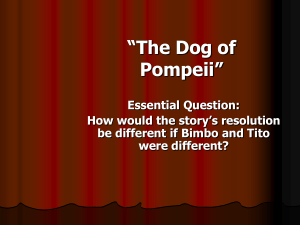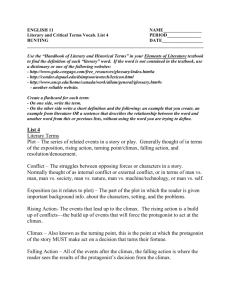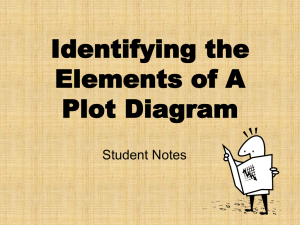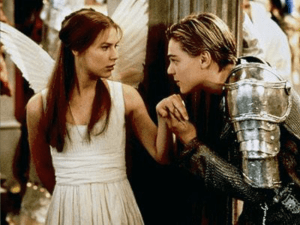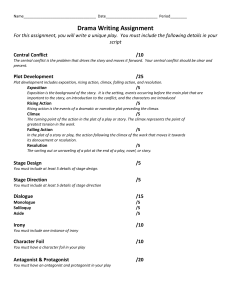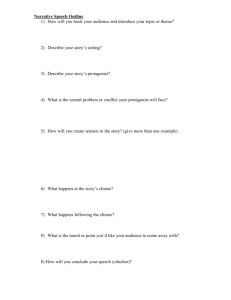Intro to Plot, Setting, & Conflict PowerPoint
advertisement
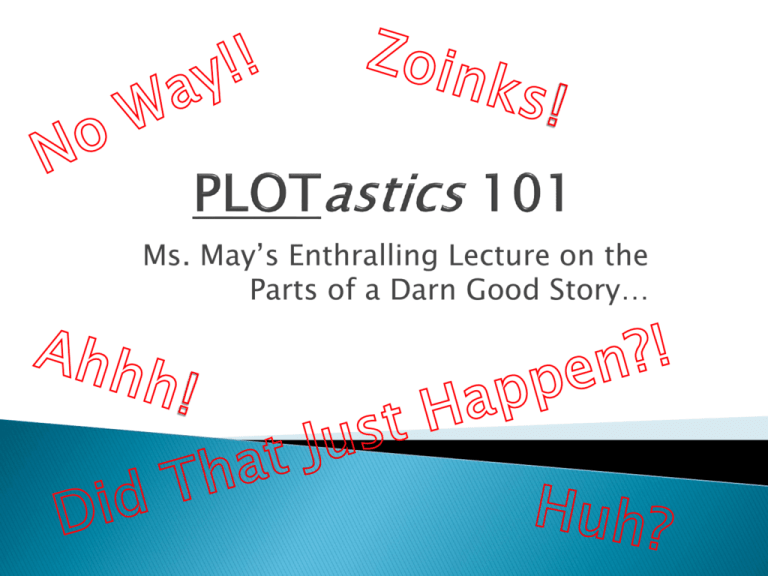
Ms. May’s Enthralling Lecture on the Parts of a Darn Good Story… ELEMENTS OF A SHORT STORY Compare & Contrast a short story with a novel… Compare & Contrast a short story with a science textbook… Narrative Fiction Action Packed Sequence of Events Plot ◦ Setting ◦ Characters A Short story is narrative in style which means that it tells a story from a character or narrator’s point of view. The three most common points of view: ◦ First person ◦ Third-person Omniscient ◦ Third-person limited The three most common points of view: ◦ In the First person, the narrator is one of the characters in the story and tells the story using the pronoun I. ◦ In the Third-person Omniscient, the narrator knows everything about the story and tells the story using the pronouns he, she, it. ◦ In the Third-person limited, the narrator zooms in on the thoughts and feelings of just one character and tells the story using the pronouns he, she, it. Most short stories are told in CHRONOLOGICAL ORDER. Chronological order is when a story is told in real time as the events happen. Since a short story is…well short…the action is packed into a short amount of time. Sometimes an author plays with time and does not write a story in just chronological order. FLASHBACKS—when a character thinks back to the past. FLASH-FORWARDS—when a character goes forward in time. Cinderella lived a terrible life until she married prince charming. Forced to work as a servant by her evil step mother, Cinderella lived a very terrible life until her fairy godmother granted her wish to go to the ball. There she met prince charming and was able to escape her evil step mother. All stories have plot. The sequence of main events or action in a story make up the plot. A good plot grabs our attention and forces the reader to go on to find out what happens next. What makes a good story? THE EXPOSITION, SETTING, & CHARACTER 1. 2. 3. 4. 5. 6. Exposition Conflict Rising Action & Complications Climax Falling Action Resolution (Dénouement) The exposition is the opening of the story. The exposition describes background information about the setting and the characters of the story. The root word expos from the word exposition means to reveal—the exposition of a story reveals important background information about a story. In the exposition, the setting of a story describes where and when a story takes place. Place Time Past Present Future An author oftentimes uses imagery to describe the setting of a story. Imagery is the use of language that appeals to the five senses: sight, smell, hearing, taste, and touch. The exposition or opening of a story not only describes the setting, it also describes the characters and their backgrounds. The characters are the people, animals, or other creatures in a story. Major Characters— Minor Characters— these are all the these are all the primary or most secondary characters important characters in in a play. a story—these are the They help move the starring roles. plot along but they ◦ Protagonist—the main character in a story around whom the action centers . ◦ Antagonist—the main character or thing who opposes or competes with the protagonist . are not the most important characters in the story. THE CONFLICT & RISING ACTION 1. 2. 3. 4. 5. 6. Exposition Conflict Rising Action & Complications Climax Falling Action Resolution (Dénouement) What drives a story? Why do we like stories? What interests us? What drives a story? Conflict!!!!!! The conflict is the main problem in a story that the protagonist (main character) faces. Conflict happens when the protagonist attempts to solve a problem and another character or force (the antagonist) tries to block them. Conflict drives a story’s plot forward and makes the reader want to go on to find out what happens next. External Conflict is a struggle that happens between the protagonist and another main character (the antagonist) or an outside force… Protagonist Vs. Character or Outside Force 1. 2. Internal Conflict is a struggle that the protagonist has within his or her own mind or heart… (a conflict of emotions) Protagonist Vs. Self 1. 2. 3. 4. 5. 6. Exposition Conflict Rising Action & Complications Climax Falling Action Resolution (Dénouement) The Rising Action are all the events that lead up to the most exciting part in a story (the climax) The rising action includes everything from the exposition of the story to the climax. Complications are added minor problems that make it more difficult for the protagonist to solve the conflict. Complications are important to the rising action because they help to add suspense to a story and keep the reader engaged and interested. 1. 2. 3. 4. 5. 6. Exposition Conflict Rising Action & Complications Climax Falling Action Resolution (Dénouement) THE CLIMAX, THE FALLING ACTION & THE RESOLUTION The Climax is the event in the story that has the most energy. The climax is the tense, exciting, or terrifying moment when the reader’s emotions are the greatest. The climax tells the reader what the end of the conflict will be (who wins????). PLOT DIAGRAM 2. CONFLICT / COMPLICATIONS 4. CLIMAX 3. RISING ACTION/ COMPLICATIONS 1. EXPOSITION 6. The Falling Action are all the events after the conflict that lead from the climax to the resolution at the end of a story. The Falling Action ties up all the loose ends in a story. The resolution occurs at the end of the story. The resolution is when the conflict is either solved or ends in some way, and the reader now knows what has happened or is going to happen to the characters. You are now in DE NO (the know) = Denouement. NOTE: Not all stories have happy or clear resolutions. Sometimes a story’s ending is ambiguous or unclear—this forces the reader to infer what happens next or what has happened. 1. 2. 3. 4. 5. 6. Exposition Conflict Rising Action & Complications Climax Falling Action Resolution (Dénouement) PLOT DIAGRAM QUIZ 4. 2. 1. 6. KEY •Falling Action •Rising Action & Complications •Denouement •Climax •Conflict •Exposition PLOT DIAGRAM 2. CONFLICT 1. EXPOSITION 4. CLIMAX 3. RISING ACTION/ COMPLICATIONS 1. Exposition—opening to the story 2. Conflict—main problem 3. Rising Action & Complications—the events that happen in between the exposition and climax (add excitement) 4. Climax—high energy point 5. Falling Action—the events leading from climax to resolution 6. Denouement—end of a story 6. RESOLUTION / DENOUEMENT
